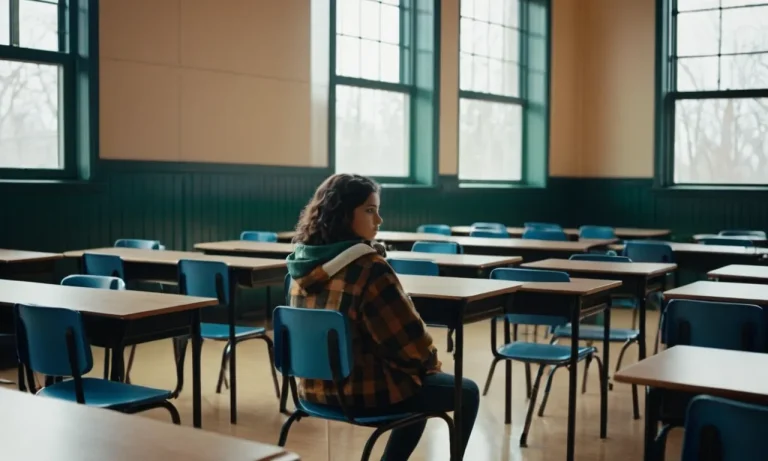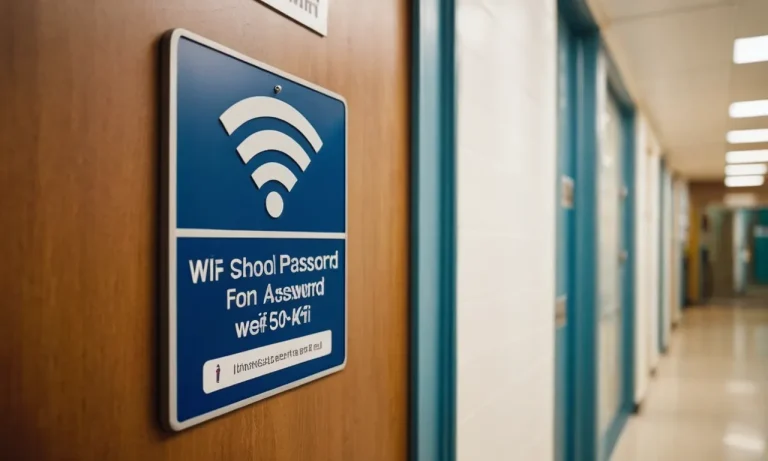Lunchtime at school is a cherished moment for students, a break from the rigors of academic life and a chance to refuel for the rest of the day. However, the question of whether schools can regulate what students bring for lunch has been a topic of debate for years.
If you’re short on time, here’s a quick answer to your question: Yes, schools can regulate what students bring for lunch, but the extent of these regulations varies depending on the school district, state laws, and federal guidelines.
In this comprehensive article, we’ll explore the reasons behind these regulations, the types of restrictions schools may impose, and the potential impact on students’ health and well-being. We’ll also delve into the legal and ethical considerations surrounding this issue, as well as the ongoing debates and controversies.
Reasons for Regulating Lunches
Promoting Healthy Eating Habits
Schools have a responsibility to foster healthy eating habits among students, as good nutrition is essential for their growth, development, and academic performance. By regulating what students bring for lunch, schools can encourage the consumption of nutrient-dense foods and discourage the consumption of unhealthy options high in sugar, salt, and saturated fats.
According to the Centers for Disease Control and Prevention (CDC), nearly one in five school-aged children and adolescents in the United States are obese. Establishing healthy eating habits at a young age can help prevent obesity and related health issues, such as type 2 diabetes, heart disease, and certain types of cancer.
Addressing Food Allergies and Dietary Restrictions
Another compelling reason for schools to regulate lunches is to accommodate students with food allergies or dietary restrictions. With an increasing number of children being diagnosed with food allergies, schools must take proactive measures to ensure a safe environment for all students.
By regulating what students bring for lunch, schools can prevent the unintentional exposure of students to allergens, which can trigger severe and potentially life-threatening reactions. Additionally, schools may need to consider dietary restrictions based on religious or cultural beliefs, ensuring that all students have access to appropriate food options.
According to Food Allergy Research & Education (FARE), approximately 1 in 13 children in the United States has a food allergy, with peanuts, tree nuts, milk, and eggs being among the most common allergens.
Ensuring Food Safety and Hygiene
Regulating lunches also helps schools maintain food safety and hygiene standards. By establishing guidelines for what can be brought for lunch, schools can reduce the risk of foodborne illnesses and ensure that food is properly stored and handled.
This is particularly important for perishable items that require refrigeration or specific temperature controls. According to the U.S. Food and Drug Administration (FDA), foodborne illnesses affect approximately 48 million people in the United States each year, resulting in hospitalizations and even deaths in severe cases.
By implementing regulations and providing proper storage facilities, schools can minimize the risk of food contamination and protect the health and well-being of their students.
While regulating lunches may seem restrictive, it ultimately serves the best interests of students by promoting healthy eating habits, accommodating dietary needs, and ensuring food safety. Schools can work collaboratively with parents, healthcare professionals, and nutritionists to develop guidelines that strike a balance between providing nutritious options and respecting individual preferences and cultural traditions.
Types of Lunch Regulations
Schools across the country have implemented various types of lunch regulations to promote healthier eating habits among students. These regulations aim to create a more conducive environment for learning by ensuring that children have access to nutritious meals.
Here are some common types of lunch regulations:
Banning Certain Foods or Beverages
Many schools have banned certain foods or beverages that are considered unhealthy or lacking in nutritional value. For example, some schools have prohibited the sale or consumption of sugary drinks like soda and sports drinks on campus.
According to the Centers for Disease Control and Prevention (CDC), about 60% of U.S. middle and high schools prohibited the sale of soda pop or fruit drinks that were not 100% juice during the school day in 2014.
Additionally, some schools have banned junk foods like candy, chips, and other high-fat, high-sugar snacks.
Nutritional Guidelines and Portion Control
Schools often establish nutritional guidelines for meals served in the cafeteria or brought from home. These guidelines may include requirements for specific food groups, such as fruits, vegetables, whole grains, and lean proteins.
They may also set limits on the amount of saturated fat, sodium, and added sugars allowed in meals. For example, the National School Lunch Program (NSLP) requires that school lunches provide one-third of the recommended daily intake of nutrients for students.
- As of 2018, 99% of public schools met the NSLP nutrition standards for fat, and 94% met the standards for sodium. 😊
- However, only 29% of schools met the standards for whole grains, suggesting room for improvement in this area. 🤔
Restrictions on Home-Packed Lunches
While some schools focus primarily on regulating the meals served in the cafeteria, others also have policies in place for home-packed lunches. These policies may prohibit certain items or require that packed lunches meet specific nutritional criteria.
For instance, some schools may not allow students to bring sugary drinks or candy in their packed lunches, while others may require that packed lunches include a serving of fruits and vegetables.
It’s important to note that the specifics of lunch regulations can vary widely between schools and districts. Some schools may have more stringent policies than others, while some may take a more lenient approach.
Ultimately, the goal of these regulations is to promote healthy eating habits and ensure that students have access to nutritious meals that support their physical and cognitive development. 👏
Legal and Ethical Considerations
School Policies and State Laws
Schools have a responsibility to ensure the health and safety of their students, which often extends to regulating what can be brought for lunch. Many states have enacted laws that outline nutritional guidelines for school meals, including packed lunches from home.
These laws aim to promote healthy eating habits and address issues such as childhood obesity and food allergies. For example, according to the Centers for Disease Control and Prevention (CDC), as of 2022, 33 states and the District of Columbia have policies that restrict the sale of unhealthy foods and beverages in schools.
Schools typically have their own policies that align with state laws and provide specific guidelines for packed lunches. These policies may prohibit certain items, such as sugary drinks, candy, or foods containing common allergens like peanuts.
Some schools may go further and require that all packed lunches meet specific nutritional criteria. While these policies can be controversial, they are generally upheld by courts as a reasonable exercise of a school’s authority to maintain a safe and conducive learning environment.
Parental Rights and Student Autonomy
On the other hand, parents have a fundamental right to make decisions regarding the upbringing and well-being of their children, including what they eat. Critics of restrictive school lunch policies argue that they infringe on this parental right and undermine student autonomy.
They contend that families should have the freedom to make their own choices about what their children consume, based on their cultural, religious, or personal preferences.
Finding the right balance between school authority and parental rights is an ongoing challenge. Some schools have adopted more flexible policies that allow for occasional exceptions or special accommodations for cultural or religious reasons.
Ultimately, open communication and collaboration between schools and families are crucial in navigating this delicate issue.
Addressing Socioeconomic Disparities
Another important consideration is the potential for school lunch policies to exacerbate socioeconomic disparities. Families with limited financial resources may struggle to provide healthy, compliant packed lunches for their children.
This can lead to stigmatization and create a divide between students from different socioeconomic backgrounds. 😔
To address this issue, many schools have implemented programs that provide free or low-cost nutritious meals to students in need. According to a report by the USDA, in the 2021-2022 school year, over 29.6 million children participated in the National School Lunch Program, which provides free or reduced-price meals to eligible students.
These programs aim to ensure that all students have access to healthy food options, regardless of their family’s financial situation.
Ongoing Debates and Controversies
Concerns about Overreach and Nanny State
The notion of schools regulating what students bring for lunch has sparked a heated debate, with some arguing that it represents an overreach of authority and a “nanny state” mentality. Critics contend that such policies infringe upon personal freedoms and parental rights, undermining individual choice and autonomy.
They argue that parents should have the ultimate say in what their children eat, and schools should not impose blanket restrictions or dictate dietary preferences. According to a survey by EdChoice, 63% of parents believe they, not the school, should decide what their child eats for lunch.
Impact on Student Nutrition and Well-being
On the other hand, proponents of school lunch regulations emphasize the importance of promoting healthy eating habits and combating the rising rates of childhood obesity and related health issues. According to the Centers for Disease Control and Prevention (CDC), approximately 19.7% of children aged 2-19 in the United States are obese.
Advocates argue that schools have a responsibility to create an environment that encourages nutritious choices and discourages the consumption of unhealthy foods high in sugar, salt, and saturated fats.
They point to studies that link poor nutrition to decreased academic performance, behavioral problems, and long-term health consequences.
Alternative Approaches and Solutions
As the debate rages on, some experts suggest exploring alternative approaches that strike a balance between personal freedom and public health concerns. One proposed solution is to implement comprehensive nutrition education programs that empower students and families to make informed choices about their diets.
These programs could cover topics such as reading food labels, understanding portion sizes, and identifying nutrient-dense options. Another approach involves collaborating with parents, students, and community stakeholders to develop guidelines and policies that reflect the unique needs and preferences of the school community.
By fostering open dialogue and seeking input from all parties, schools may be able to find a middle ground that respects individual autonomy while promoting overall well-being. 😊
Ultimately, the issue of schools regulating what students bring for lunch is a complex one, with valid arguments on both sides. As the debates continue, it is crucial to consider the perspectives of all stakeholders, including parents, students, educators, and health professionals.
By fostering open communication, embracing evidence-based practices, and exploring creative solutions, we can work towards creating a school environment that supports healthy choices while respecting individual freedoms. 👍
Conclusion
The issue of whether schools can regulate what students bring for lunch is a complex and multifaceted one, with valid arguments on both sides. While proponents argue that such regulations promote healthy eating habits, address dietary restrictions, and ensure food safety, critics raise concerns about overreach, infringement on personal freedoms, and potential unintended consequences.
Ultimately, finding the right balance between promoting student well-being and respecting individual choices is crucial. Ongoing dialogue, evidence-based policymaking, and a collaborative approach involving schools, parents, and students will be key to navigating this contentious issue effectively.






